|
|

Main
Index
- Index
- Acknowledgements
- Background
- Introduction
- Imperial Japanese Space Navy
- Oceanic Union
- Neu Swabian League
- Eurasian Solar Union
- The Kra'Vak
- Known Space
- Abbreviations
This campaign was played under rules based on the board game 'Stellar Conquest' by Avalon Hill;
with ideas from 'Full Thrust Campaign Rules: Fleet Book Edition' by Roger Burton
West and Peter Edge; and 'Crew Quality and Experience', posted to the GZG-L List by
Sean Bayan Schoonmaker.
"It's full of stars!" With these words, astronomer Anitoly Krupkin opened one of the more remarkable chapters
of human space exploration. Messier catalog item M-474-5644, long thought to be a diffuse and rather dim nebula,
turned out to be something else entirely. Krupkin's findings indicated the nebula was in fact a wormhole, stable
and open only a few hundred light years from Earth. Scouting expeditions revealed a pocket universe, densely
packed with stars and dust. Four human alliances immediately despatched colonising fleets - the Eurasian Solar
Union, the Imperial Japanese Space Navy, the Oceanic Union (with blessings and equipment fom the United Nations
Space Command), and the Neu Swabian League. Due to the unusual structure of space-time round the mouth of the
wormhole, the fleets found themselves scattered to the edges of a pocket of space, confronted with the unknown,
and very keen to get down to it.
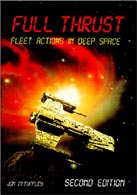
|
Full Thrust!
Huge interstellar wars, and massive space combats in the depths of space. That is what life is all about.
Attack ships on fire off the shoulder of Orion, C-beams glittering in the dark near the Tanhauser Gate. Jon
M Tuffley and friends have produced an excellent set of space combat rules called "Full Thrust". Complete with
a back story of human balkanisation of space (you just knew mankind were going to do that, didn't you?), and
the predations of at least three species of aliens, the ruleset has enough information to allow you to fight
space battles from all of your favourite science fiction backgrounds. No expense is spared, and no problem is
insurmountable - any apparent inconsistancy can be dismissed with a wave of the hand, and a small amount of
PSB (Pseudo Scientific Bullshit), and the game can then continue.
|
Stellar Conquest:
A golden classic from the time when a game came in a box (instead of on a CD), with a board and cardboard
counters, Stellar Conquest is a game of space exploration, conquest, colonisation and inter-stellar warfare.
The four players each start at a corner of the board, and proceed to explore and colonise towards the middle and
inevitable conflict with the other players.
|

|
A Stellar Conquest Campaign for Full Thrust:
For this campaign, David Billinghurst has organised play-by-email Stellar Conquest, where all of the battles are
fought out using the Full Thrust wargaming rules. Hurrah! Some modifications are necessary, and the details of
these custom rules are given here. The game is 44 turns long, victory goes to the player
controlling the most Terran (3 pts) and Sub-Terran (1 pt) planets. As mentioned above, this variant of FT was
developed standing on the shoulders of the people mentioned in the acknowledgements section.
That sounds quite uncomfortable.
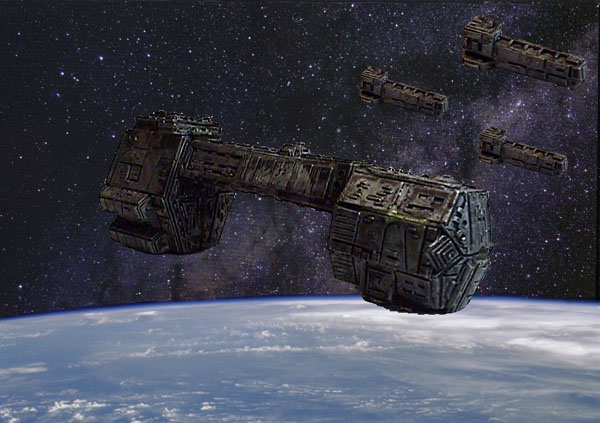
Elements of the Neu Swabian League fleet assemble above the Neu Danzig colony on Indi IV
Return to Top

|
The Imperial Japanese States (IJS) are organised and run by large Megacorporations (previously known as
the Zaibatsu) of which the Sakato and Yamamato Corporations are the largest. The military arm of the IJS is
the Imperial Japanese Space Navy (IJSN). The IJS is loosely aligned with the New Anglian Confederation (NAC)
and the Oceanic Union (OU).
Little is known about the technology of IJSN ships, though there have been rumours of a very efficient FTL engine
called the Hyper Velocity Drive. It is assumed that IJSN ships are crewed by individuals who are fanatically
loyal to the corporation, avidly listen to jap-pop, and whom excitedly devour the latest manga and anime as soon
as they become available.
|
The Oceanic Union (OU) was formed in 2050 AD from the nations Australia, New Zealand, Papua New Guinea, and
various south sea island states. The OU have a small number of off world colonies, and their extensive navy
consists primarily of small patrol craft, exploratory craft and supply vessels.
The United Nations Space Command (UNSC) was formed in 2143 AD and tasked with forbidding space conflict within
the inner colonies. Up to this point, they have been successful in their mission. UNSC ships are of modular
design, making it hard to predict what weaponry they will field. It is also understood many of the ships use an
unusual weapon known as a 'grazer'.
Cooperation between the OU and the UNSC has always been close - with the OU often supplying troops to the UNSC
for peacekeeping activities, and when the A-K (Anitoly Krupkin) Anomaly was discovered, the UNSC supplied ships
to the OU to aid in their exploration efforts.
All officers below the rank of captain are customarily referred to as Bruce, and all enlisted crew are known as
Trev. It is a popular misconception that the official anthem of the OU starts "Tie me kangaroo down, sport..."
|

|
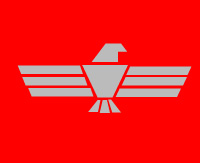
|
The Neu Swabian League (NSL) split from the European Union in 2101 AD. Its naval arm, the
Kriegsraumflotte (KRF) was formed initally from a few ships of the European Space Force in 2102 AD. The
first NSL designed ship the FTL cruiser KRS Wien was launched in 2109.
Basing their military traditions on those of early 20th Century Germany, Bavaria and Swabia, and the 19th Century
traditions of the Austrio-Hungarian Empire, the NSL concentrate their military doctrine round slow heavily
armoured ships with many beam weapons. KRF ships are manned by volunteers (conscription is only used occasionally
in the NSL), and many of the officers come from aristocratic German and Austrian families.
|
The beginnings of the Eurasian Solar Union (ESU) can be traced back to a Chinese Communist supported
military coup in Moscow in 2047 AD. Chinese, Russian and other asian communist regimes fused into a single
political entity, and renamed itself the Eurasian Solar Union in 2047 AD. The same year, the ESU launched
its first FTL ship, and by 2079 AD, the Eurasian Solar Union Star Navy, known as the Voyenno-Kosmicheskiy
Flot (VKF) received its formal charter. As the capital of the ESU moved from Earth to the colony Nova
Moskva, Chinese influence was on the wane.
ESU military doctrine centres round large screened ships of moderate mobility, small fast escorts, and fighters
launched from dedicated carrier ships. VKF vessels are manned by a mixture of constript and volunteer crews, and
morale tends to be rather poor.
|
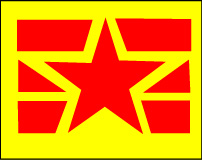
|

|
STOP PRESS: We are not alone. On turn 2144 (Campaign Turn 8) both the NSL and the ESU lose fleets (at Schedar and Spica,
respectively) under mysterious circumstances. Both governments blame the other for the loss. However by 2148 (Campaign turn 12)
it becomes clear there is another space-faring race present - They are identified as the Kra'Vak.
The Kra'Vak are an aggressive semi-reptilian star-faring race, known for their ferocity. Their ships mount large rail-guns
(called K-guns) which do appalling damage with their kinetic shot - particularly to armoured targets.
Kra'Vak society is organised into large family clans, each clan being made up of many separate war families.
The Kra'Vak home world of Zha'Vak had many fast predators, and as an evolutionary adaption to this, the Kra'Vak developed Ro'Kah
(Clouded War Mind) - when faced by a combat situation, a typical Kra'Vak becomes highly aggressive, and often flies into a berserk
rage. While this adaption was useful on prehistoric Zha'Vak, it makes the Kra'Vak very unpleasant neighbours in space.
|
Return to Top
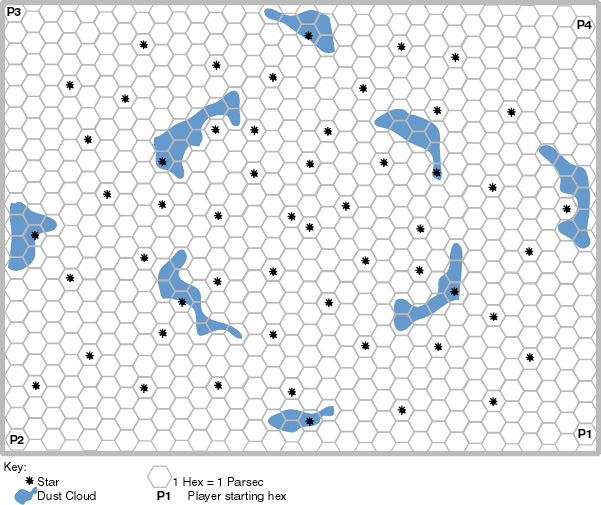
Despite the best efforts of three generations of physicists to mathematically describe the curvature of space-time,
within the A-K anomaly at least space is flat rectangular and has four corners. As marked on the accompanying map,
the region of space in question is approximately 32 x 21 parsecs in area, with an even sprinkling of stars (54 in
total). Large clouds of interstellar dust and gas are the other feature of this region of space. These clouds
interfere with jump drives, making travel through them a time consuming activity.
Here are a number of abbreviations used throughout this site:
A-K: Anitoly Krupkin
APDU: Advanced Planetary Defence Unit
CET: Controlled Environment Technology
CINC: Commander In Chief
ECM: Electronic Counter Measures
ESU: Eurasian Solar Union
FT: Full Thrust
FTL: Faster Than Light
GZG: Ground Zero Games
IJS: Imperial Japanese States
IJSN: Imperial Japanese Space Navy
KRF: Kriegsraumflotte
MKPs: Multiple Kenetic Penetrator
MU: Movement Unit (one thousand kilometers)
NAC: New Anglian Confederation
NSL: New Swabian League
OU: Oceanic Union
PDS's: Point Defence Systems
PDU: Planetary Defence Unit
PSB: Pseudo Scientific Bullshit
pts: Points
RRK: Rassen Reinheit Klub
SMRs: Salvo Missile Racks
UNSC: United Nations Space Corps
VKF: Voyenno-Kosmicheskiy Flot
Return to Top
| Main |
Events |
Current |
Battles |
Rules |
Articles |
Links |

All images and designs copyright © 2002 - 2009 by Piraeus Games, Chris Harrod, David Billinghurst, John
Drummond, Eureka Miniatures and the owners of the respective sites mentioned on this page.
All rights reserved.
|
|
Page last modified on Sunday November 01 2009 03:28:00
|
|












